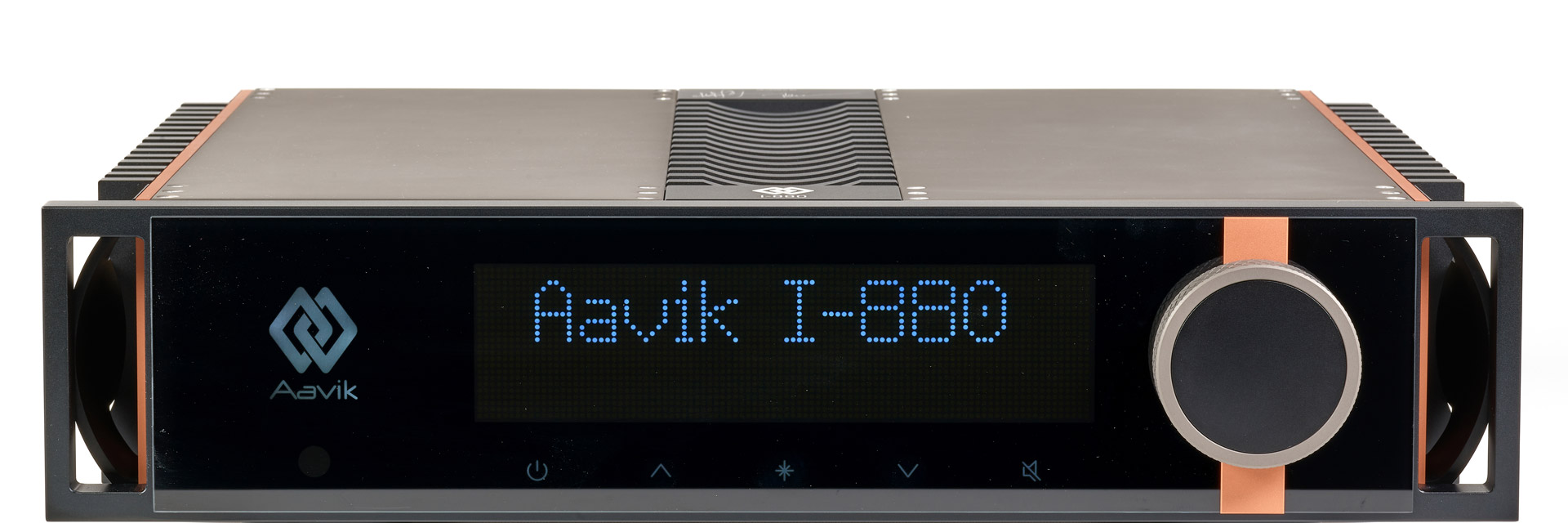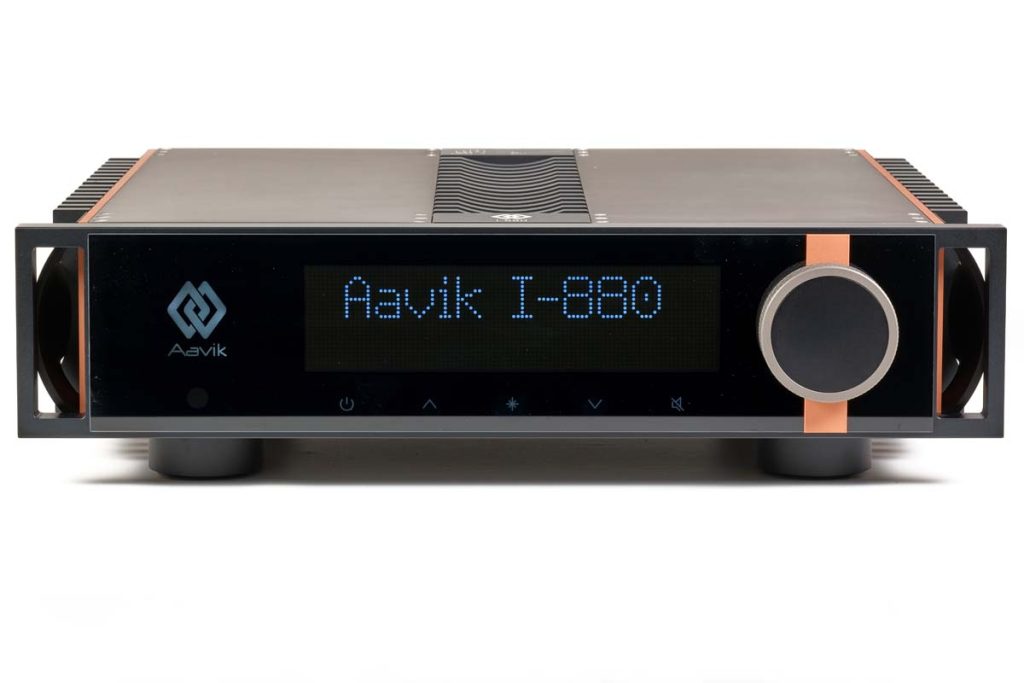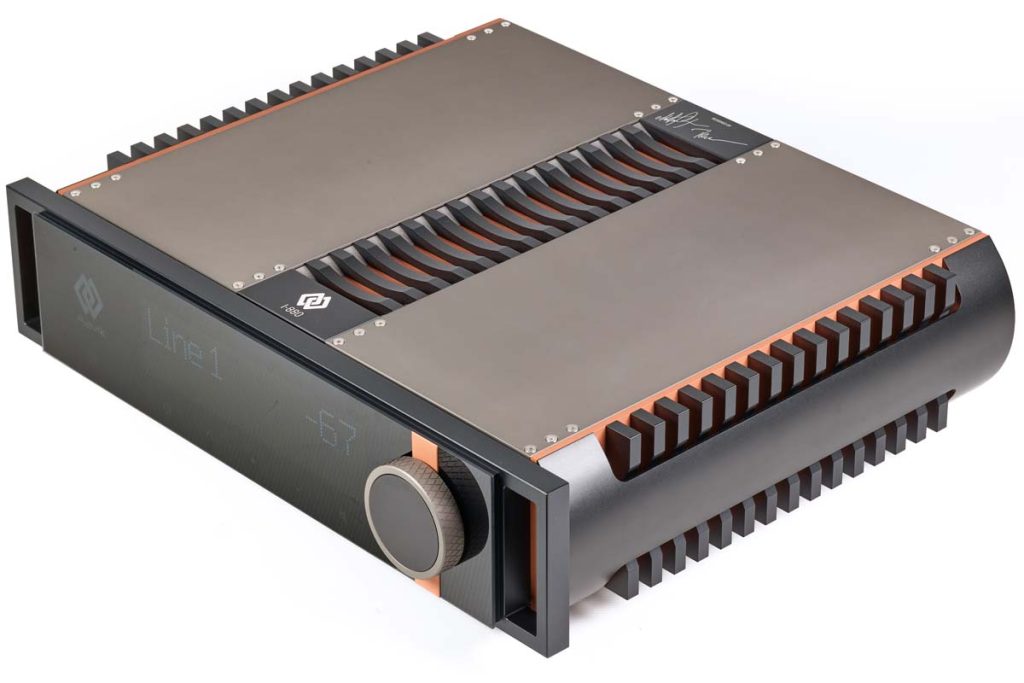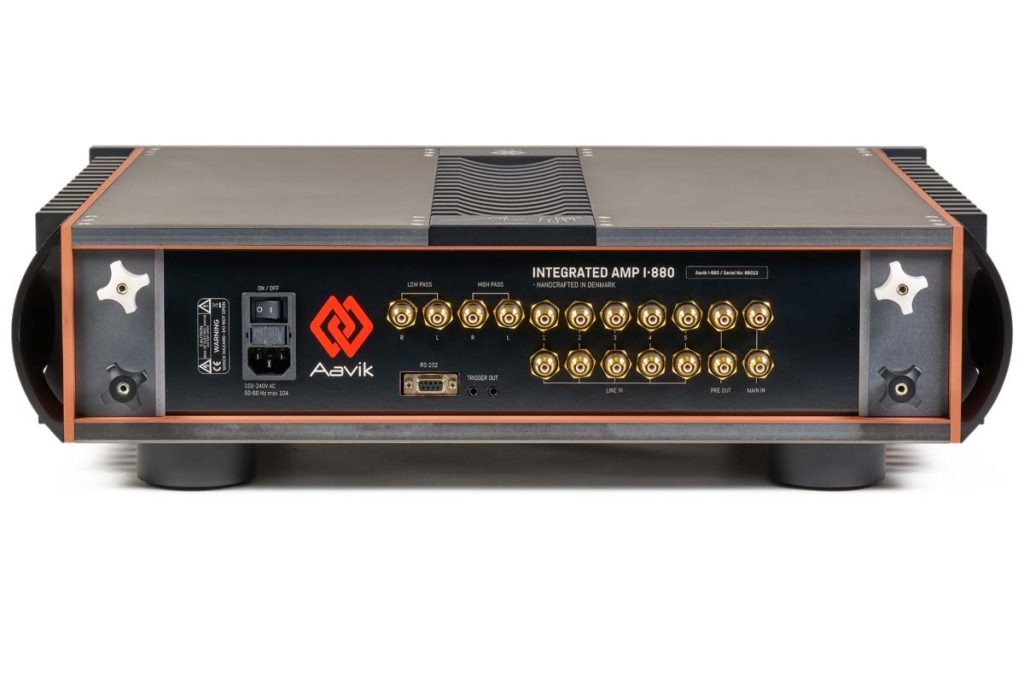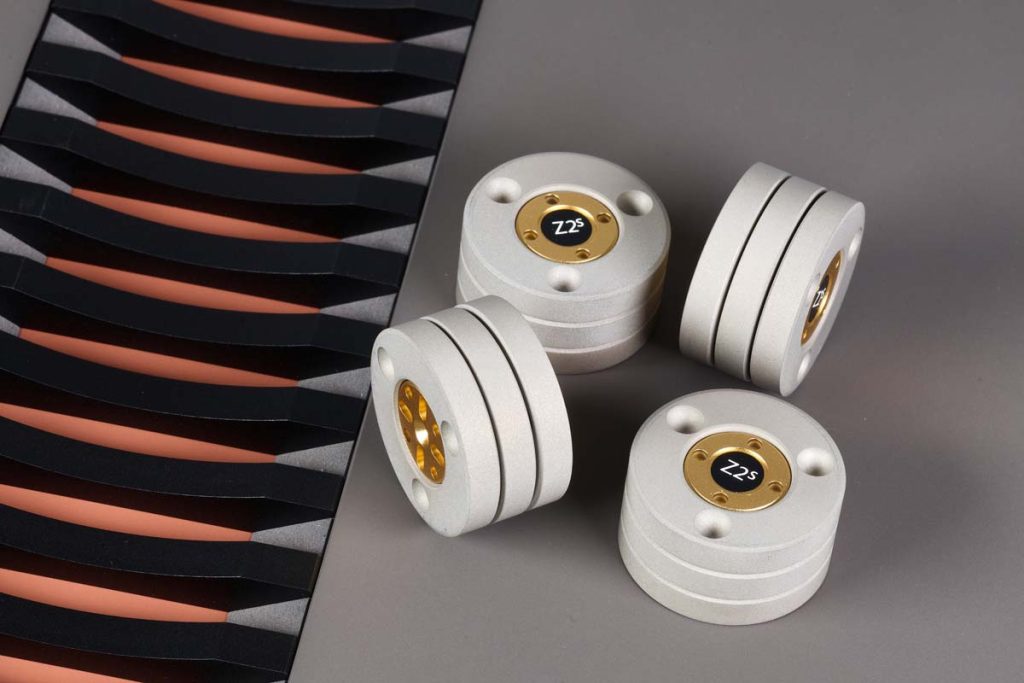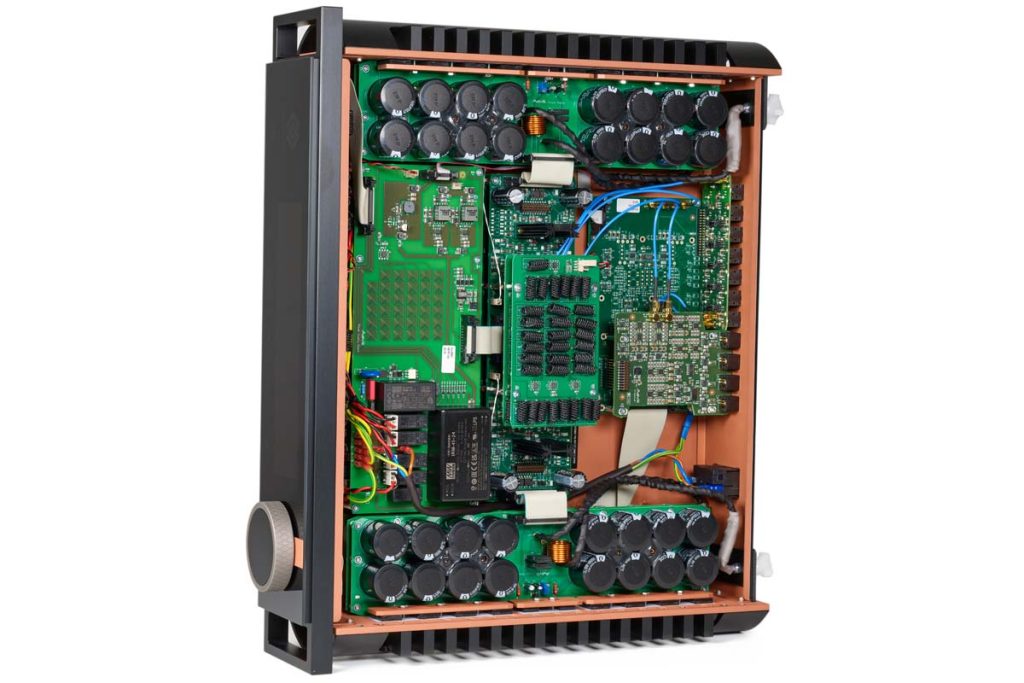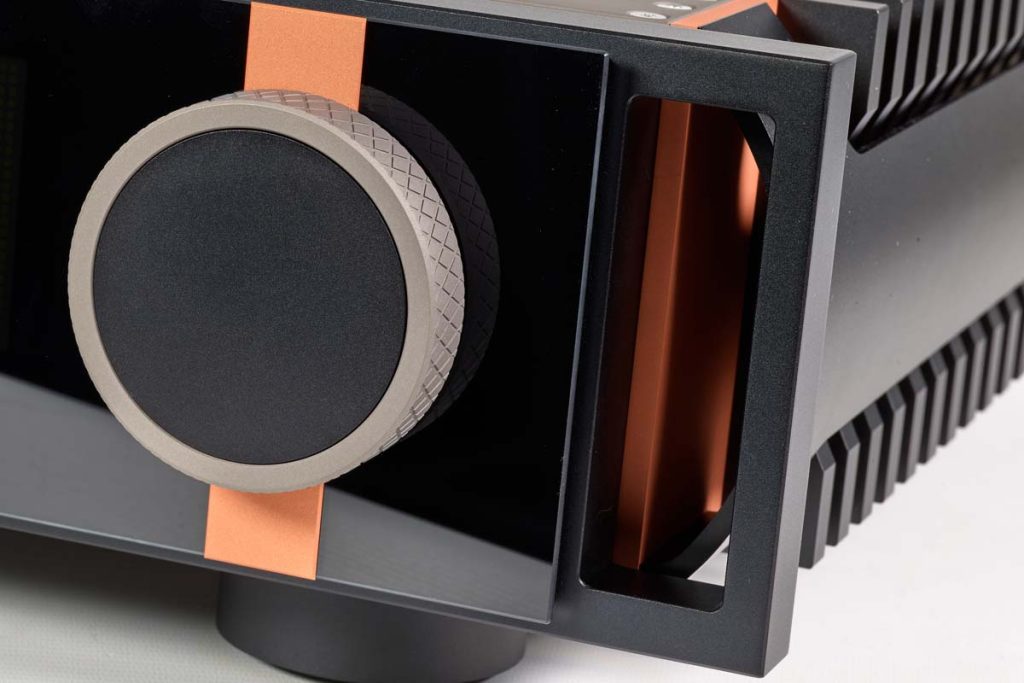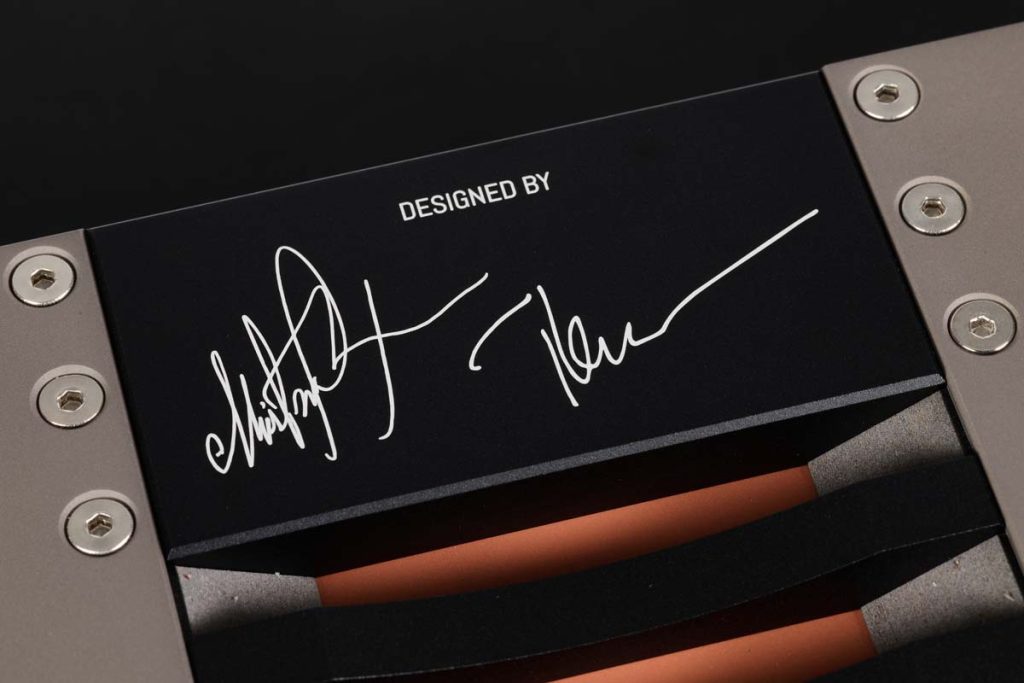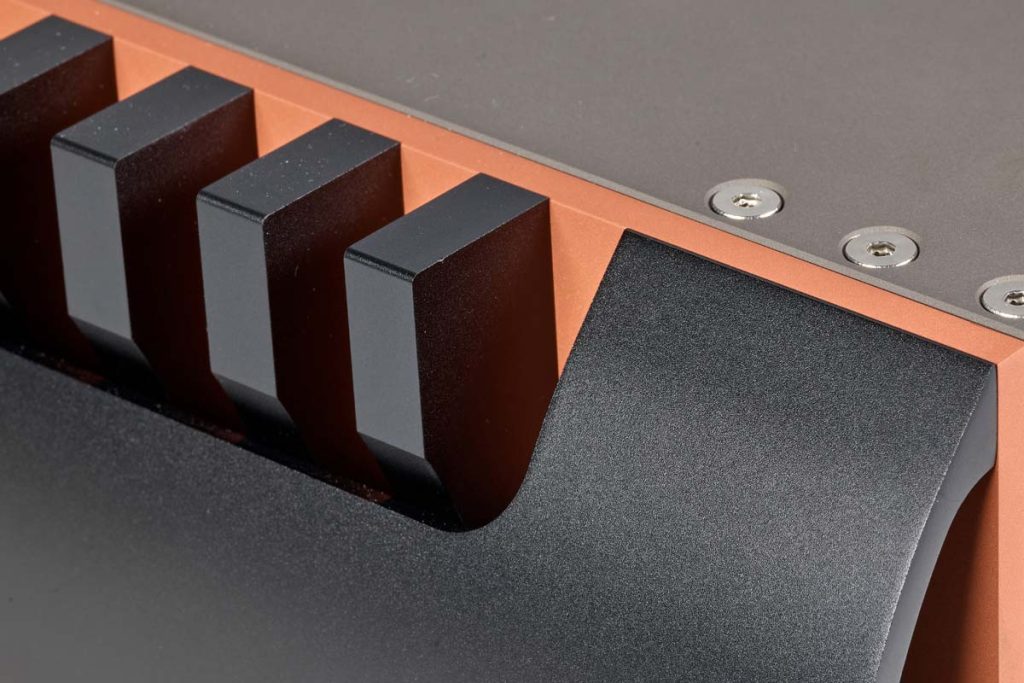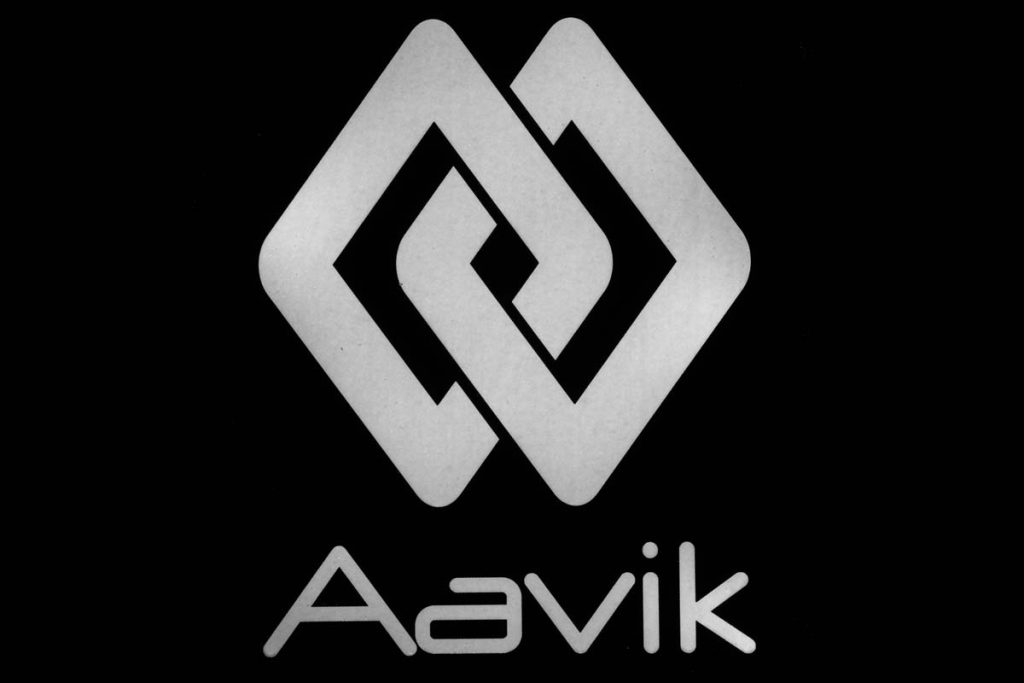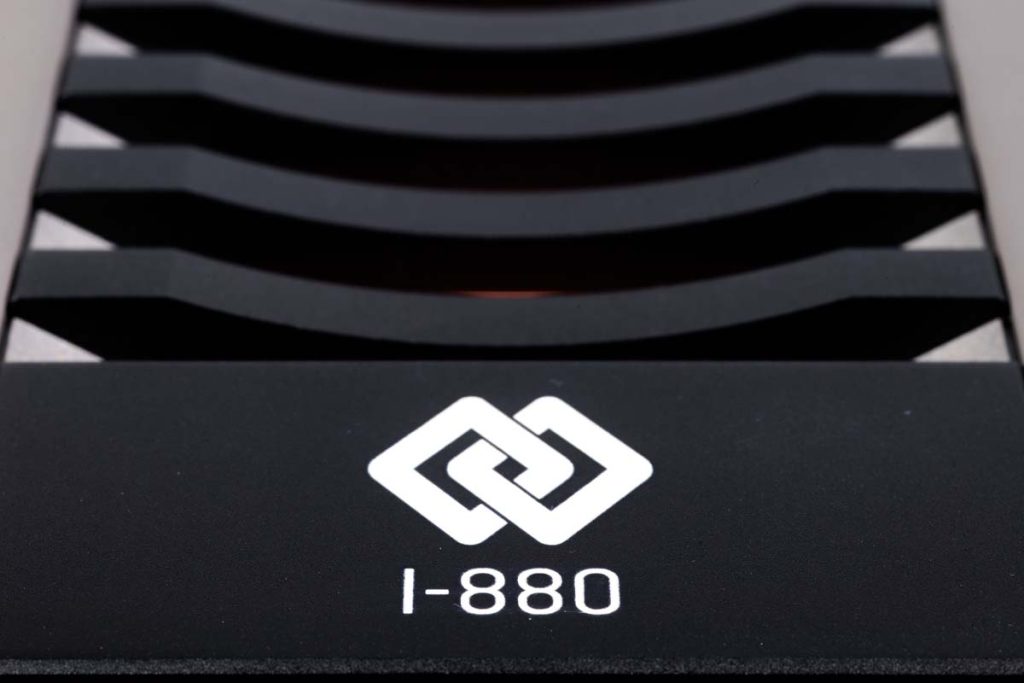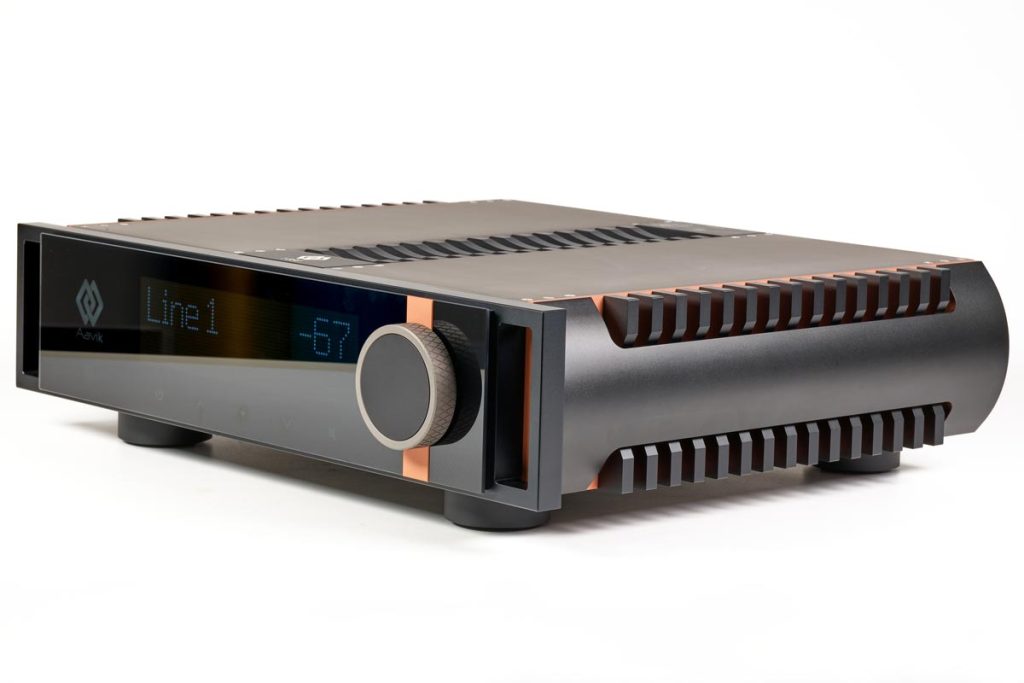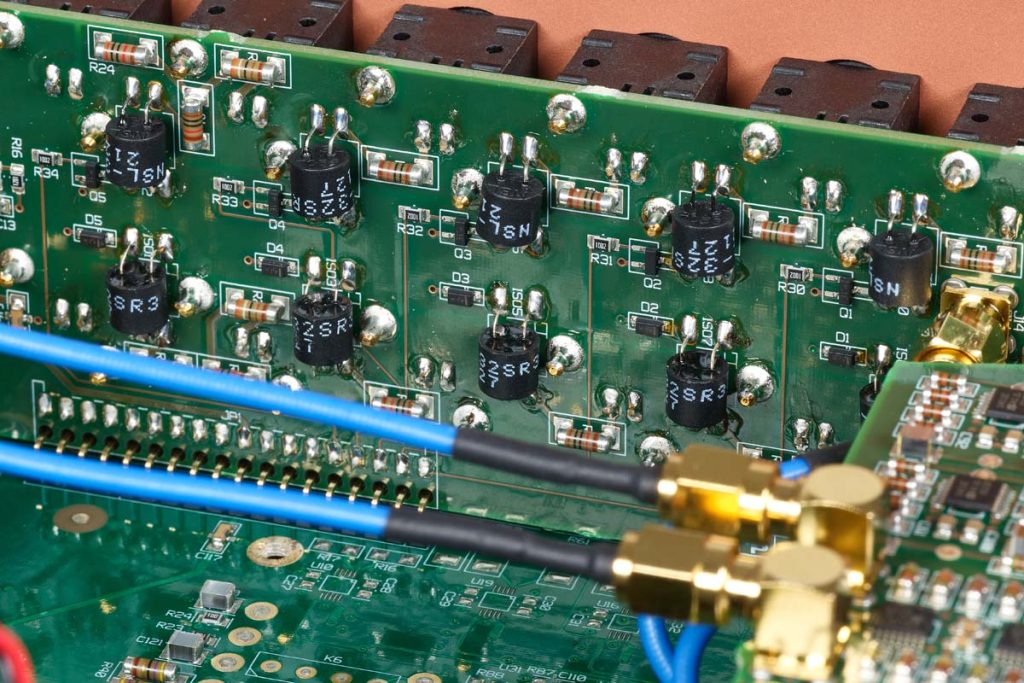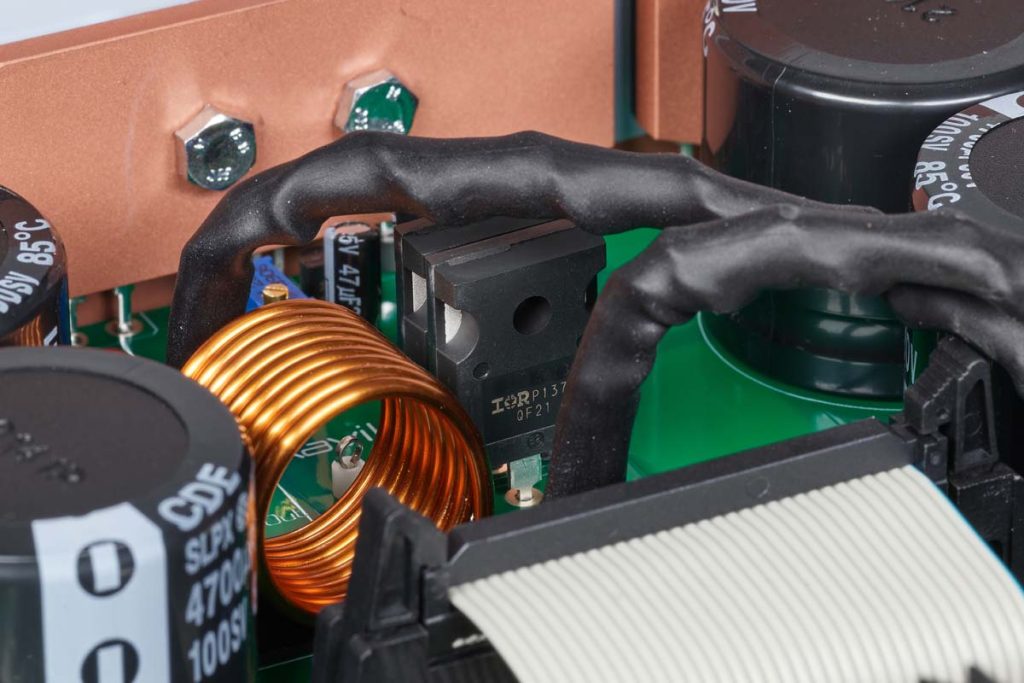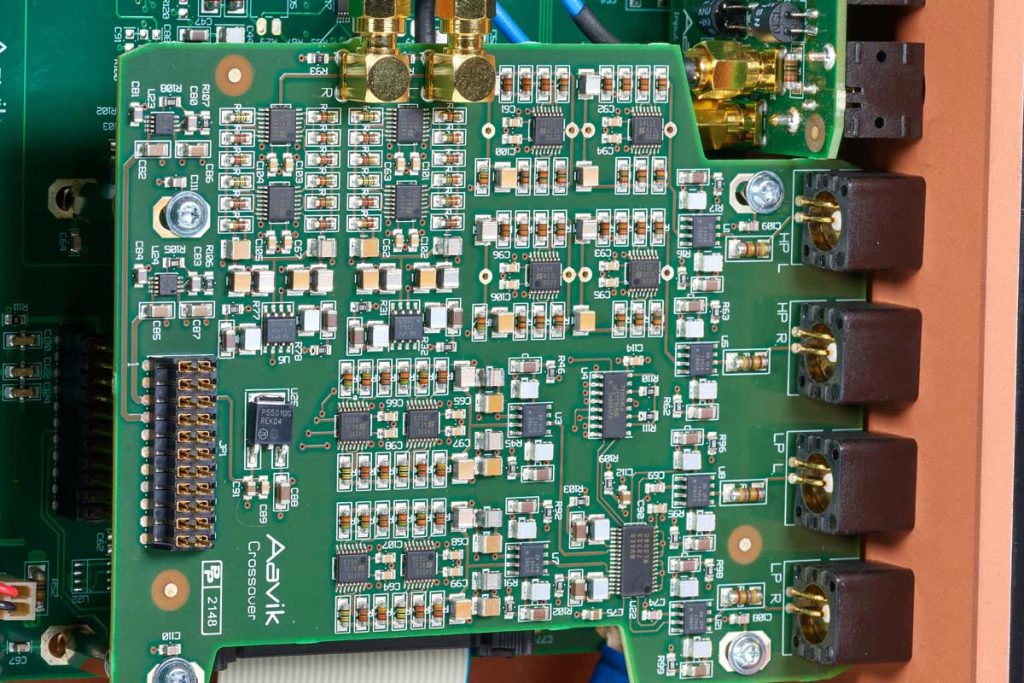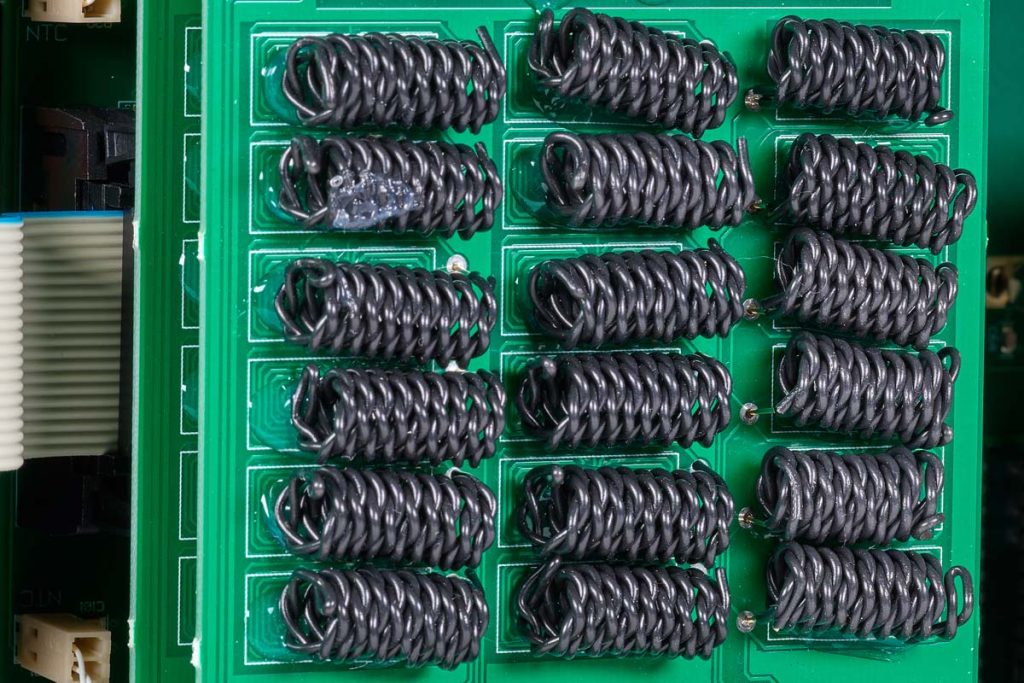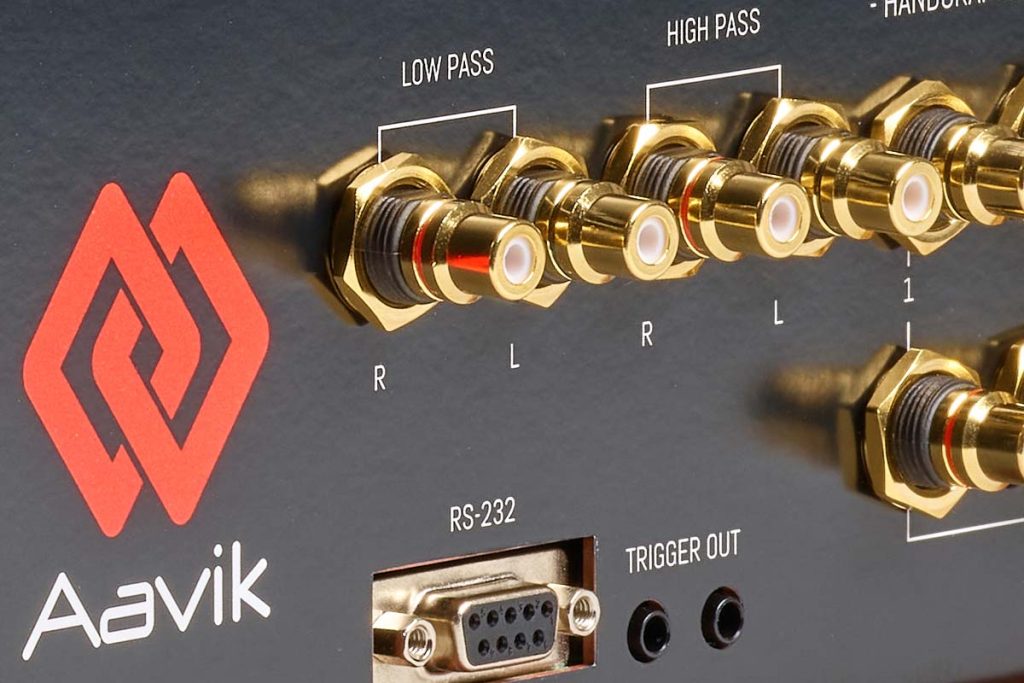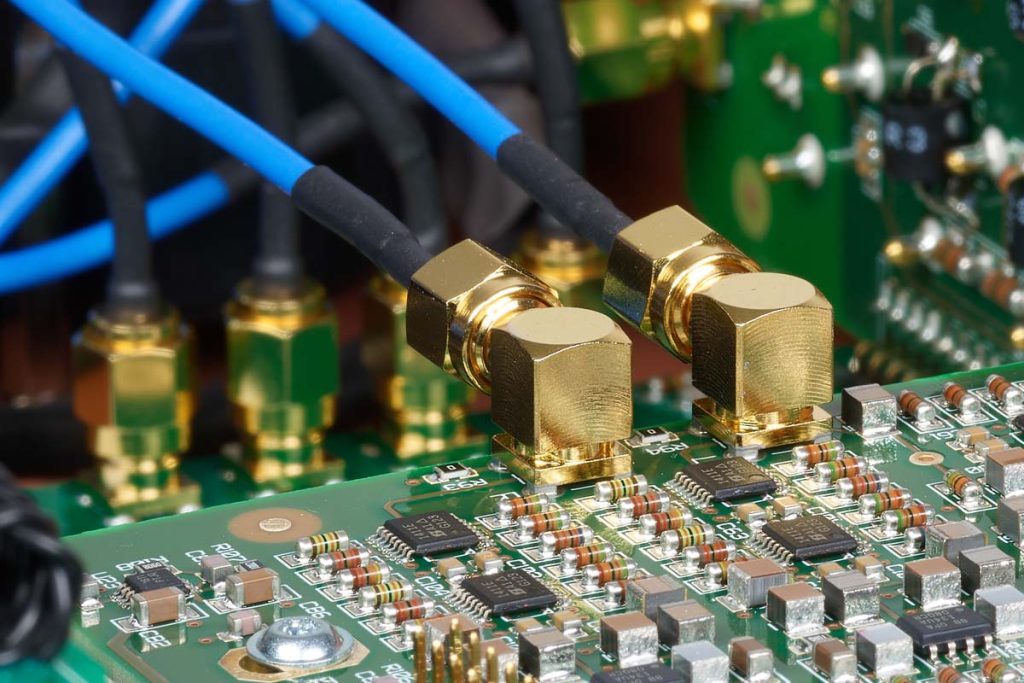Writing for a hi-fi magazine can sometimes be a pretty surreal experience. Just imagine being able to phone a manufacturer to ask about the most coveted integrated amp currently in existence—and 90 minutes later getting an e-mail saying it’s on the back of a truck headed to your address.
Putting the months of negotiations and a preparatory trip to Denmark aside, the Aavik I-880 set out on its quest to conquer our listening room in a relatively unspectacular fashion. However, once the amplifier arrived at the FIDELITY offices the word “unspectacular” ceased to apply. If I had to sum my experiences over the last two months, it could all be said in a single sentence: after installing this colossus in our listening room, we ran our speakers (such as Wilson Audio’s Sasha DAW or Børresen’s Z5 Cryo) through no other amplifiers. There were three reasons for this. First, the integrated amp is so large that we couldn’t add a further component to our Pagode double-width rack. Second, its rich range of features already covers the bases. In fact, its separable amplifier sections let us use it when we just wanted a preamp or a power amp. And finally, it produces an unerringly flexible and stable sound that frequently blows the listener’s mind! There’s simply no logical reason not to use this amp.
On the other hand, I have never used an amp with such a challenging rationale. As we described last December in our extensive online report (see the link below), this Danish company develops and manufactures its products from the ground up at its headquarters in Aalborg. Therefore, the speakers, components and accessories from Audio Group Denmark (ADG) are among the most exclusive in the hi-fi scene. In turn, with the introduction of the 880 series—to which the integrated amp will welcome several siblings—the company is entering the realm of pure luxury. Very few people will ever experience the bliss of an I-880. And that’s not a huge problem in itself, because nobody truly “needs” one. But, as ever, there’s a catch: once you experience this nearly unattainable component in close quarters, you won’t forget it!
I was hooked immediately! After just a few minutes, I was already beginning to comprehend this amp’s incredible level of operation. The first piece delivered by my S-580 (streamer) and D-580 (DAC) was “Howl” by Katie Gately. A random choice made by Tidal, it proved to be a bullseye. The song starts with swirling percussion that tails off in all directions across a captivating sound stage before, some 30 seconds later, the singer and an incredibly deep bass dryly take over. And the 880 delivered this frequency and impulse extravaganza in a clean, succinct, holographic and exciting fashion that had me holding my breath. Only one analogy comes to mind for these first few seconds: it’s the moment after a tooth extraction, when your tongue still tries to find something that is no longer there. My ears could clearly locate the acoustic elements, but my eyes said nothing was there!
Then I decided to stream Black Sabbath’s “Warning”, because of its incredible impact even on unexceptional hi-fi equipment. When guitarist Tony Iommy performs the first short solo with no reverb, immediately after the first verse, the sound seemingly exists beyond the listening room. What the Aavik conjures up out of the band’s debut album can only be described as trippy! The instruments seem spread out over far more than a 180-degree stage, whirring around and over my head yet still retaining fixed reference points in the room. For some, this can feel like Dr. Bowman’s flight through space and time during the last minutes of Kubrik’s 2001—even before the first glass of red wine.
Michael Børresen’s collaboration with Flemming—an experienced designer intimate with the intricacies behind an amplifier of the highest quality—is probably the stuff of dreams. And the project might not have been possible without it—Børresen refused to succumb to any problems or obstacles en route to creating the “ultimate amplifier”. Understandably, we couldn’t wait to pop the lid of our test model and scrutinize its interior. Anyone expecting fairy dust or enchanted circuits inside (which would explain the price) will be disappointed by the reality. Essentially, there are three down-to earth reasons for the superb performance of the I-880:
First, there is the consistent and extraordinarily liberal use of already-familiar AGD techniques. Initially this means technologies like the multitudes of small Tesla coils (132 hand-wound and 311 “square coils“ integrated onto the boards). But principally there is an excellent use of materials and the resulting finely-tuned resonance control. Although the I-880’s lid uses no wood, thus differing from other Aavik components, these materials are entirely non-magnetic. The perfectly shielded structure, featuring a massive copper interior enclosure, rests on four Darkz zirconium feet. Those who read the online report mentioned above will already be familiar. Instead of permanent attachment, the decoupling feet are only loosely inserted into the 880’s metal feet. Should the Danes find an even better material mix moving forward (and I certainly wouldn’t bet against it), the Darkz feet can easily be replaced.
Second, the design and layout are extremely well thought out and consistently implemented. In other words, Michael Børresen is a master craftsman –down to the smallest detail. Whether it’s the board layout, the strict assembly separations or the smart elements nesting to ensure minimal signal paths –every aspect of the I-880 could feature in a textbook for advanced amplifier design. It may seem strange to emphasize these things in a device of this class, but we have seen many contrary examples in our time. Assembly connections have been implemented in a hybrid fashion: the actual signals travel short distances through neatly laid ribbon cables. Only for control signals does Aavik sometimes utilize longer wires, which are even allowed to have kinks. However, for the hypersensitive signals from Tesla coils and dither circuits, the manufacturer uses a handful of pre-assembled cables with screw connectors. Børresen definitely doesn’t compromise on his core technology. And, while we’re on the subject, zirconium is used for some of these blue cables, for dithering and for 20 of the Tesla coils.
Third: in some areas, the amplifier employs sophisticated circuitry that doesn’t appear particularly revolutionary in isolation. However, when working together they have such a dramatic effect that we wonder why other manufacturers haven’t caught on. Michael Børresen obviously possesses the rare talent of discovering solutions to problems others haven’t yet noticed. Here are just the most important examples: the I-880 is designed as a Class A integrated amplifier, which surprised us some. With 2 x 200 watts (at 8 ohms), we felt the heavyweight’s operating temperature wouldn’t be up to the task. Yet Børresen found a trick whereby the eight transistor pairs per channel never completely switch off. When the other half wave is amplified, the transistor in “waiting” mode retains sufficient power to get going as quickly as possible when needed. This means the Danish developer can utilize the advantages of the musical Class A technology and still keep “a cool head”—as well as boast tolerably low power consumption.
The transistor pair timing is decisively important. Normally, they switch over at a rigidly defined point, meaning that the negative feedback has almost no time to make adjustments, leading to crossover distortion. In the I-880, Børresen has transformed this switching point into a tiny slope. This turns the abrupt transition into a precisely adjustable period of time. The result: a Class A amplifier that doesn’t get hot as hell—with charmingly organic playback. This is where the focus lies when realizing its almost uncanny performance flexibility.
Yet another fascinating feature is the offset correction of the speaker outputs. Normally, a servo circuit is used here to add the output’s DC voltage offset to the input again, thereby influencing the signal itself. Børresen has come up with a control loop that continuously adjusts the operating points of the input circuitry to ensure that the speaker input offset is precisely zero volts, without influencing the signal at all.
We also noticed that Børresen doesn’t like relays. Normally we give these components special praise: at first glance, there’s no reason to complain about them, and, in isolation, they do a good job. However, Børresen’s believes they entail compromises that he has no room for on his mission toward perfection. After all, relays are magnetic switches that can impact signal flow, especially near the input switches where signals remain miniscule. Therefore, Aavik uses photocell optocouplers for input selection—resistors that change their resistance under the influence of light. When a source is selected on the remote or the front panel, a resistor is exposed to light inside the respective optocoupler and switched from high-ohm to low-ohm. This makes a perfect switch without an interfering magnetic field. The protective circuit in front of the single-wire speaker terminals works similarly.
However, it’s less about avoiding interfering magnetic fields and more about implementing a direct (or low-ohm) connection between speaker and output transistors. In this case, two power MosFETs are used. They have significantly lower volume resistance than even the best relays. Moreover, unlike some relays, they don’t give up the ghost after an emergency switch-off. In addition, the functionality is retained here while eliminating even the smallest potential troublemaker.
The rest of the amplifier’s features are equally innovative and practical. Admittedly, there is no tone control, but that’s the only missing bit. Using the star-shaped menu button on the huge front panel, you can program features such as individual preamp gains for all five inputs (up to +26 dB of gain). Balance and muting are also finely controllable. One of the inputs can be set up as a home theater bypass with a fixed volume setting. A menu function also lets you separate the preamp and power amp sections. Accordingly, separate pre-out and power amp connections are on the rear panel.
In combination with other amplifiers or power amps, the 880 offers even more highlights: the rear panel has two filtered pre-outs labeled High Pass and Low Pass, which can both be programmed in sensible Hertz increments. Then, connected power amps are only passed frequencies below (low pass) or above (high pass) the chosen operating points. But don’t forget that the I-880 continues to amplify the range between the filters.
This functionality is accessible in numerous scenarios—for precise subwoofer driving, perfect labor division when bi-amping or tri-amping, right through to a built-in crossover for two-way or three-way speakers. With low pass, the level can be adjusted by up to 6 decibels in 0.25 dB increments, functionally becoming a bass control. The manufacturer emphasizes that the 880’s crossover is purely analog. Apart from the display and menu controls, the I-880 has neither DSPs nor digital signal sections.
Last but not least, there is a menu setting for permanently displaying the amp’s operating temperature. This revealed that, even when constantly in use, it never rose much past 42°C (admittedly this was during January and February). That’s a sensational result for a Class A circuit.
Now, what closing remarks can I make about this paragon of an amplifier? Of course, some people will be horrified by the price, and we could discuss the point and absurdity of luxury goods to our heart’s content. On the other hand, it is clear that the superb I-880 conjures up specific expectations in terms of design, haptics, features, handling and sound. And the Aavik truly delivers! This amplifier not only met every one of our expectations, it surpassed them. The Rasmussen-inspired design is awesome and the craftsmanship stunning. Despite the rich features, a three-button interface couldn’t have been implemented more smoothly. And I’ve gushed enough about the sound already.
Our test device is no longer in the listening room—coping with our loss will definitely take some time…
Accompanying Equipment
CD Player: Audio Note CD 3.1x/II, Ayon CD-3sx | Network Player/DAC: Aavik S-580 and D-580, Lumin X-1 | Integrated Amplifier: Aavik I-580 | Preamplifier: Luxman CL-1000, AVM Ovation SA 8.3 | Power Amplifier: Luxman M-10x, AVM Ovation MA 8.3 | Loudspeakers: Wilson Audio Sasha DAW, Børresen Z5 Cryo, DALI Epicon 6 | Rack: Finite Elemente, Solidsteel
Integrated amplifier
Aavik I-880
Concept: Class A integrated amplifier with separable preamp and power amp sections plus “analog crossover” for smart bi-amping or tri-amping. | Inputs: 5 x line-in (Cinch) | Gain lines: +5-15 dB (lines 1-4), +1-11 dB (line 5) | Input impedance: 10K ohm | Distortion, line stage (THD@1 kHz, 1 V): < 0.005% | Distortion (THD@10W, 1 kHz, 8 ohm): < 0.007% | Outputs: pre-out and 2 filtered pre-outs (low pass and high pass) | Output impedance: 50 ohm | Power outputs: 2 speaker terminals for spade connectors and banana plugs | Output power: 2 x 200W (8 ohm), 2 x 400W (4 ohm) | Special features: Aavik Noise Reduction, 132 active Tesla coils, 311 active square coils, 18 dither circuits, programmable high-pass and low-pass filters, Apple remote (Bluetooth) | Power consumption standby/idle: < 1 W/< 150 W | Dimensions (W/H/D): 58/16/51 cm | Weight: 36 kg | Warranty period: 2 years | Price: approximately €67,000
Audio Group Denmark
Rebslagervej 4
9000 Aalborg
Denmark
info@audiogroupdenmark.com

